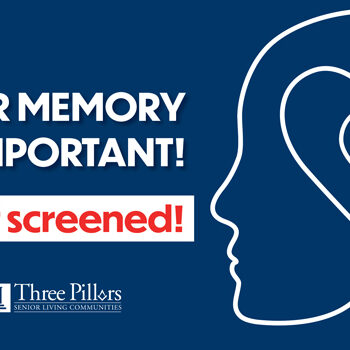Simplify Your Life: How to Downsize Like a Pro

After living in the same house for decades, the thought of packing up and moving can be overwhelming, both physically and emotionally. Over the years, you’ve accumulated a lot of stuff that holds memories. Coping with the realities of aging is tough, especially when it comes to downsizing and selling a cherished home.
Many people hesitate to move because they don’t know where or how to start organizing and decluttering and feel it is just easier to stay where they are. However, did you know that there are numerous benefits to downsizing and making a move?
The Upsides of Downsizing
Financial Gains: Selling your home can boost your retirement income with the profits from the property sale. You can also use the proceeds toward a smaller home or put them towards an entrance fee in a Continuing Care Retirement Community (CCRC).
Reduced Expenses: You may lower your property tax and enjoy a more manageable living space. If you move into a senior living community like Three Pillars, the stress of home maintenance is removed.
Tax Advantages: You may avoid capital gains taxes on the sale of your residence by using a “Capital Gains Bypass Trust.” This tool allows you to sell an appreciated asset, pay zero tax, and then manage the sale proceeds in the trust to provide income for you and your spouse. It’s essential to consult an estate planner before listing your home, as it will be too late to use this strategy once an offer is accepted.
Independence and Peace of Mind: Moving into a CCRC can help seniors maintain their independence longer and provide peace of mind knowing that help is available if needs change.
How to Downsize and Declutter Like a Pro.
Start Now: If you’ve made a deposit or put your name on a waitlist, it’s time to start sorting through your belongings.
Tidy by Category, Not Location: Approach the task in small steps by sorting items by category rather than by room. People often store similar items in multiple places, so this method helps identify duplicates and forgotten items. Consider these categories:
- Books
- Clothes
- Papers
- Miscellaneous items
- Sentimental items
Get Started – Pick a Category: Pull everything out in that category and take stock. Gather all similar items throughout your home. For example, if sorting clothes, place all your clothing on a table or bed.
- Use the KonMari Method: If it doesn’t bring you joy, let it go. Marie Kondo, the queen of decluttering, suggests taking each item in your hand and asking: “Does this spark joy?” Keep what does and dispose of the rest. This is a simple yet effective way to make decisions about what to keep.
- Focus on What to Keep: Cherish items that bring you joy and let go of the rest.
- If You Don’t Use It, Lose It: If you haven’t used something for a year, let it go. For sets like China, keep only what you’ll use—keep four place settings vs. 6-8. If you lost a loved one, keep one precious item of theirs and take pictures of the rest.
- If You Don’t Wear It, Share It: Only move clothes you actually wear.
Use the “Four-Box Method”:
- Box 1: Trash: Items not worth donating or selling.
- Box 2: Give Away/Sell: Items to donate or give to family and friends.
- Box 3: Storage: Be selective; only items used occasionally, like seasonal decorations.
- Box 4: Keep: Items that bring joy or have a purpose in your daily life.
Furniture: Measure your furniture and only take what fits in with your new home. Donate or give away what you won’t need.
Tame the Paper Tower:
- Step 1: Sort by Category:
- Currently in use
- Needed for a limited time or must be kept indefinitely.
- Sentimental papers (e.g., photographs, children’s cards, artwork)
- Step 2: Divide and Conquer:
- Papers to be saved (e.g., insurance paperwork, wills)
- Papers to be dealt with (e.g., bills)
- Step 3: Create a Designated Space for each type, such as a letter tray for papers needing attention.
Sentimental Items: Tackle sentimental items last, after sorting through other categories. Remember that mementos are different from memories; you can honor your past without holding onto everything. By organizing these keepsakes, you can feel more connected to and grounded in the life you’ve created—a life worth celebrating.
Donations: Offer items to family and friends first. If there are no takers, donate to local thrift stores, charities, or organizations of your choice.
Here are some examples of organizations that take donations:
- AMVETS National Service Foundation: Visit AMVETS pickup to arrange a donation pickup.
- Goodwill: Find local Goodwill stores at Donation Center or Home Pick-up.
- Katy’s Kloset: They accept medical equipment and supplies for their lending library. Visit How Can I Help?
- Purple Heart: Call 1-800-924-0188 to see if they pick up in your area or go to Schedule a Pickup @GreenDrop.
- The Salvation Army: Schedule a pickup at Donate Goods.
- St Vincent de Paul Thrift Stores: Convenient drop-off locations throughout the area Find a Store Near You.
Throw Away: Ensure you dispose of unwanted items.
- Hire a service to remove junk.
- Rent a temporary dumpster.
- Take waste to your local waste and recycling center.
*Follow this rule: Don’t buy anything new unless you get rid of something.
Organize: Now that you’ve decided what to keep, find a place for each category. Use clear containers to maximize space and keep track of what’s inside. Avoid using colored Rubbermaid containers, which can obscure the contents.
With everything sorted and organized, imagine how much easier it will be to pack when you’re ready to move! Take time to appreciate your hard work and realize that you’ve made more room for happiness in your life!
The above content is shared for educational and informational purposes only. Reference to any services, third parties, or links to third-party websites does not constitute an endorsement, sponsorship, or recommendation of such services or third parties by Three Pillars Senior Living Communities.




